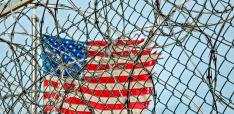Human Trafficking and Migration: Concepts, Linkages and New Frontiers
The way we think about human trafficking and migration is changing. Moreover, at the global, regional and national levels of policy-making, practice and advocacy, trafficking is showing signs of developing into a mainstream topic, and with it, so are directly related migration issues. To keep abreast of developments, a pertinent question to ask in the contemporary context is: What are the key conceptual issues, linkages and new developments? This paper responds to this question with a four-fold focus. First, the main concepts and definitions are discussed. Next, the multidisciplinary nature of the subject matter is highlighted. An outline of some of the most interesting new developments is then presented. Finally, concluding remarks are offered. Furthermore, a fresh perspective on human trafficking and migration is advanced in three ways: (1) by engaging in a discussion of selected conceptual issues and advancing a contemporary definition of trafficking; (2) by emphasizing a seven-point common framework (and global platform) and by suggesting that the ‘theoretical divide’ in migration studies can be potentially bridged through the study of the trafficking-migration nexus; and (3) by highlighting several new frontiers, especially in the policy and practice areas, that nonetheless have implications for research, theory and study.
Policy Implications
- The UN definition of human trafficking (hereinafter also referred to as trafficking or trafficking in persons) needs to be updated to keep abreast of policy, programme and related changes that have transpired over the past dozen years or so. A revised (contemporary) definition of trafficking, that includes the fundamental role of migration and two processes – traditional and new - has implications primarily for policy and practice; but also, nonetheless, for research, theory and study as well.
- There are seven key thrusts that need to be pursued as part of a common framework to tackle trafficking and related migration issues. These include good governance, integrity in the national security apparatus, inclusive development, human rights and business approaches, international and regional cooperation and partnerships, binding international legal obligations, and oversight bodies. In addition, a global platform, such as the Millennium Development Goals (MDGs), is highly recommended to galvanize efforts towards action at the global, regional and national levels.
- The trafficking-migration nexus holds promise in facilitating a modicum of convergence in the theoretical divide – i.e. intrastate vs. interstate - that currently prevails in migration studies. The study of trafficking therefore has lessons and opportunities for advancing migration studies.
- Along with high profile advocacy (by politicians such as Barack Obama and Hilary Clinton), several new frontiers have emerged in recent years that collectively suggest that trafficking is developing into a mainstream issue in various policy arenas (global, regional, and national). While the migration dimension has been of general interest in the context of trafficking, it now merits incremental attention in the debate on trafficking and migration. As such, there is a fundamental need to identify, monitor, and evaluate the rapid changes that are unfolding in human trafficking and the trafficking-migration nexus in order to formulate relevant and sustainable policy and program solutions, and to chart a new course in academic research and study.


